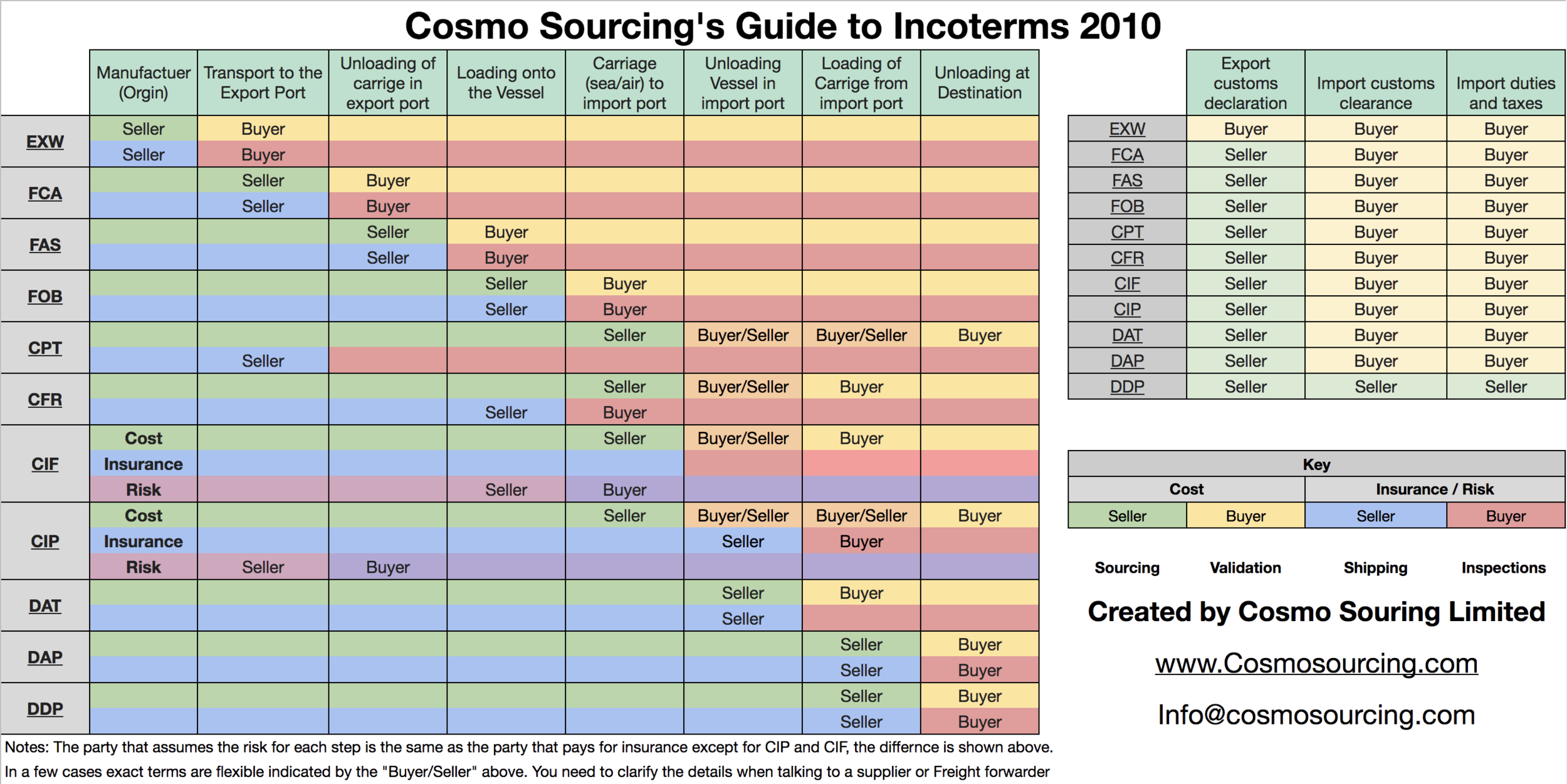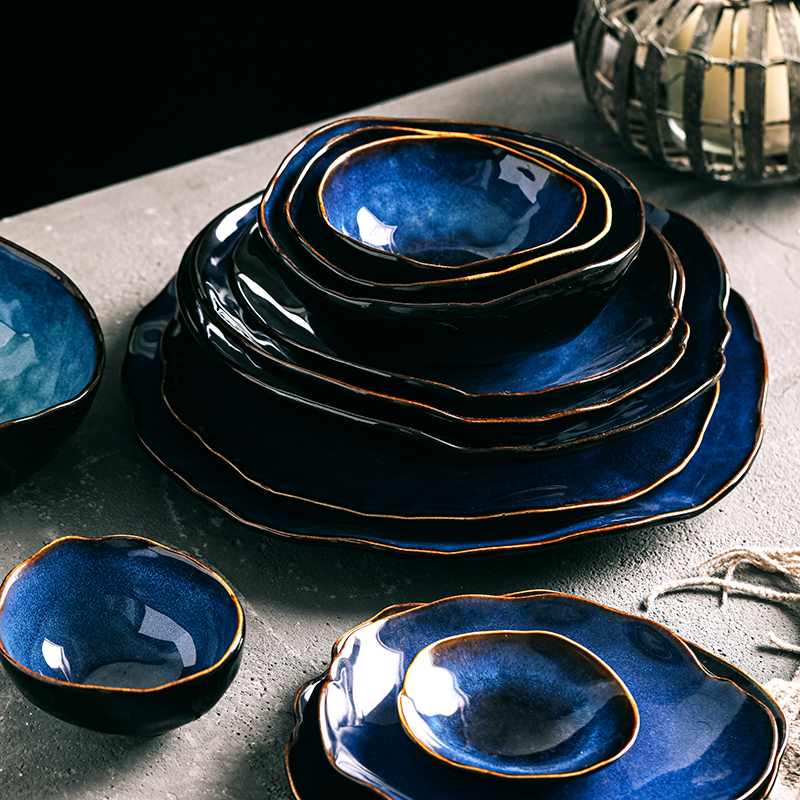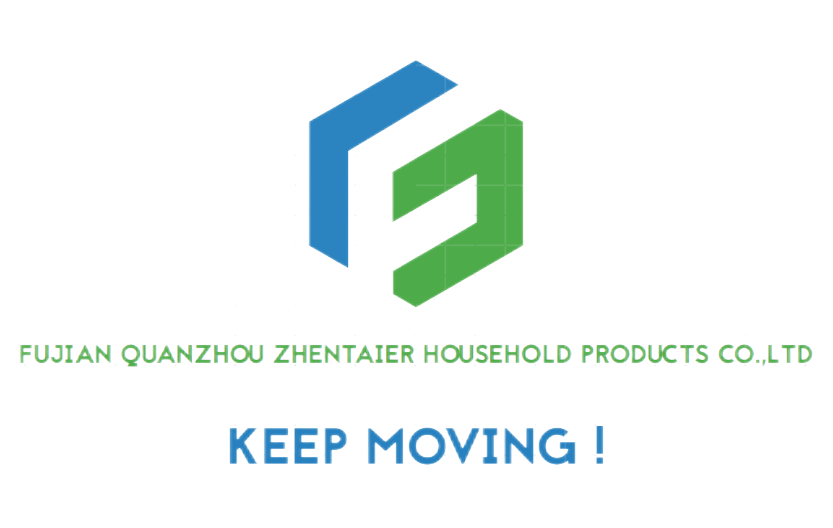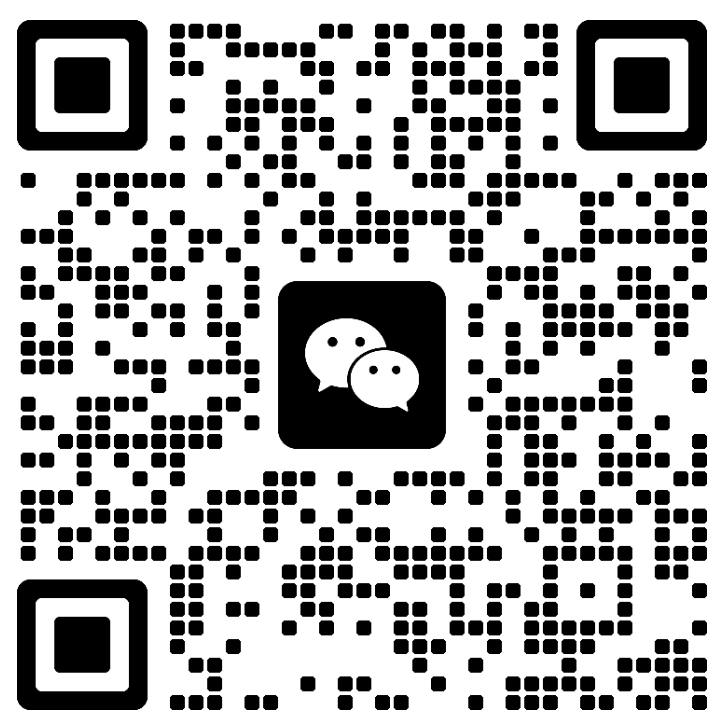What does EXW, FCA, FOB, DAP, DAT, DDP, CPT, CIP, CIF, CFR, OR FAS mean ?

Are you unsure about the trade terms of Alibaba or Chinese suppliers? Don't know what the 3 letters that came with your quote mean? Cosmo has defined the 2010 Incoterms abbreviations, such as FOB, CFR, and DAP for international trade.
This article is a shortened version of our guide to Trade Terms, Shipping terms, and Incoterms. You can read the full version here.
Incoterms and Trade Terms Defined
As EXW and FOB are the most common, we’ll start with those two. Personally, when we ask for initial quotes from manufacturers in our RFQ’s, We request them to quote prices in EXW and FOB. We want to know the EXW price as that is the price of just the product by itself. The FOB to gauge the shipping prices and because the Port is a good place for our freight forwarder to pick up an item. Most of our projects are FOB, and we contract with a freight forwarder to complete the rest of the shipping.
EXW- Ex Works
This is the most basic shipping intercom term that a supplier can provide. The seller makes the item available to pick up at the factory and is not responsible for the product once it leaves the factory doors. The buyer is responsible for transporting it from the factory and covers all export and import clearances and insurance costs.
If you are getting initial quotes from a factory for the first time, then they will almost always give you a quote for EXW unless you explicitly ask for a quote in another term. The reason factories and supplier quotes in EXW is simply because it’s the lowest price for them, and it looks good when you're comparing quotes, and you need the lowest price.
FOB - Free On Board
FOB means that the seller ships the goods to the nearest port, and the seller is responsible for everything after that. The Seller will drop this off at the port of shipment, and the Buyer will either pick it up themselves or more commonly work with a freight forwarder to ship it for them. The seller is the one to clear the goods for export, and the buyer is responsible for the goods from the port onwards. It’s vital when getting FOB quotes to make sure that you get the port's name that they are dropping the goods off at.
One of the big reasons this is the most popular intercom term used that the Export port is a good place to have a 3rd party inspection service inspect the goods. Further, the seller is responsible for all activities in the country of export. Simultaneously, the Buyer is responsible for all activities once the goods leave the country, making things simple. Besides, most freight forwarders will have an office at or near the port, and it’s an easy spot for them to pick up the goods on your behalf.
FCA - Free Carrier
This is just one step up from EXW, in which the seller clears the goods for export and delivers the goods to the port of export. The buyer has to unload the goods in the port and is responsible for the goods once they reach the port. The buyer arranges the carrier. The biggest difference between EXW is that the seller is obligated to loading the goods on the buyer’s Carrier. It should be noted the this is often confused for FOB and if you think there is some confusion, feel free to ask your supplier to elaborate and give details.
CPT - Carriage paid to
The seller pays for the goods to be shipped to the import port that the buyer chooses. The risk is transferred to the Buyer once the goods arrive at the port. The buyer is responsible for unloading the vessel and arranging further transportation from there. Even though the seller is responsible for the Export port's cost, the buyer assumes the risk and insurance cost once the goods are unloaded at the Export port. The seller is responsible for export clearance, freight costs.
CIP - Carriage and Insurance paid to
Effectively the same as CPT except that the seller is required to obtain insurance for the goods during transit. CIP also covers all modes of transportation, while CIF is specifically for sea freight. It should be noted that CIP and CIF are the only two methods in which risk and insurance are different. Once the goods are unloaded at the export port, The seller assumes the insurance cost but not the risk until goods are unloaded at the import port.
DAT - Delivered at Terminal
The Seller delivers the goods (unloaded) to the import port, and the buyer is responsible for the cost and risk of the goods from that point on. The seller takes on all risks or costs associated with the goods until it reaches the import port. The Buyer pays all Import and Customs.
DAP - Delivered at Place
The Seller delivers the goods to the final destination of the buyer. The seller assumes all risks with the shipping and either load or pays a third party to load the goods for shipment. The Buyer is only responsible for paying the customs fee and clearing the goods for clearance. The buyer also pays to unload the goods at the final destination.
DDP - Delivered Duty Paid
In these terms, this means that the seller pays for and is responsible for everything. The seller pays all costs and assumes all risks to the final destination. The buyer is only responsible for unloading the goods once they arrive at the final destination as chosen by the buyer.
We often get asked, why don’t you get every project DDP? I will say it is the easiest for the buyer, but it will not be the cheapest. The Seller is the one that picks the shipping company and will choose the one they like best and not the cheapest or most reliable. You are putting a ton of trust in the shipping company. If you want, I would suggest you get a quote for DDP from your supplier, then get a quote for FOB and a quote from a freight forwarder and compare the two's final total price.
FAS - Free Alongside Ship
The Seller is responsible for delivering all goods to the vessel's side at the named export port. The seller pays for and assumes all risks until the goods are placed in the port, and the seller clears the goods for export. The Buyer then takes on all costs and risks from that point on, including loading the ship. This has one less step than FOB, in which the bears the cost and risk of loading the ship.
CFR - Cost and Freight
The seller is responsible for bearing the shipping cost until the named import port; however, the risk is given to the buyer once the goods are loaded onto the ship at the export port and final delivery of goods from the destination port. It should be noted that this is effectively the same as CPT above, except that CFR is specifically for water-based transport.
CIF - Cost Insurance and Freight
Effectively similar to the one above except that the buyer will require the seller to take on the risk or obtain insurance on the good until the destination port. The seller bears all costs of shipping and assumes the risk of the goods until the destination port. The seller is also responsible for clearing customs, but the buyer is responsible for paying the duty. Again this is effectively the same as CIP, except CIF is specifically for water.
 Japanese Style Sake Cup Sets with Pot
Japanese Style Sake Cup Sets with Pot
 Home Living for Ceramic Dinnerware Sets and Mugs
Home Living for Ceramic Dinnerware Sets and Mugs
 Colorful Laser Engraving Logos
Colorful Laser Engraving Logos

